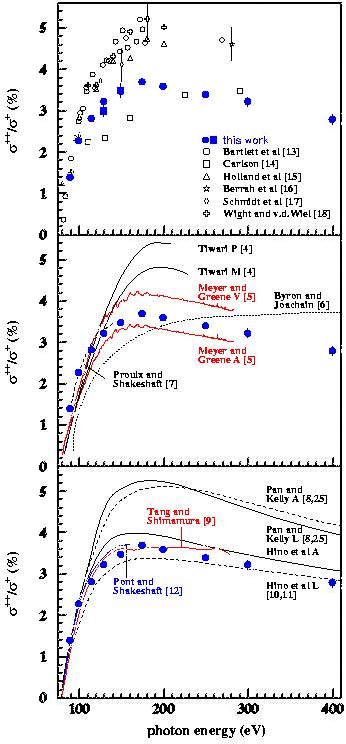The Ratio of double to single Ionization of Helium by Photoabsorption:
|
In 1995 we have measured the ratio of double to single ionization of He by 85-400 eV photons using Cold Target Recoil Ion Momentum Spectroscopy. Our technique allows the elimination of all possible systematical errors discussed so far in the literature on this subject. We foundnd the ratio in this energy range to be about 25% lower than previously assumed. Our data have been later confirmed by several groups and are today in good agreement with all advanced theoretical calculations. 
Ratio of double to single ionization as function of photon energy. Full circles: COLTRIMS data
measured at ALS, full squares COLTRIMS data measured at Hasylab.
The open circles in (b) are the same data as in (a) but scaled down by 1.3. The other symbols
show the collectrion of data available as of 1995 and theories as of 1995. The references
and the figure can be found in [Doernerratio].  In the limes of high photon energies the ratio is determined only by the shake off process and depends only on the Helium ground state. Therefore much attention has been given to establish this asymptotic ratio experimentally. At high photon energy however Compton scattering competes with the photo absorption process. With Coltrims we succeeded to separate the ions created by photoabsorption from those from compton scattering. The figure shows the momentum component of the ion parallel to the polarization. The narrow spike at the origing results from Compton scatttering (compare also 2dim distribution). We could therefore determine the ratio of double to single ionization by photoabsorbtion at an photon energy of 7keV [spielberger95prl] to be 1.72+-0.12% 
right: Momentum distribution of He1+ ions created by 9keV photon impact. The outer rim are ions produced by photoabsorption, the inner spike results from compton scattering. |
